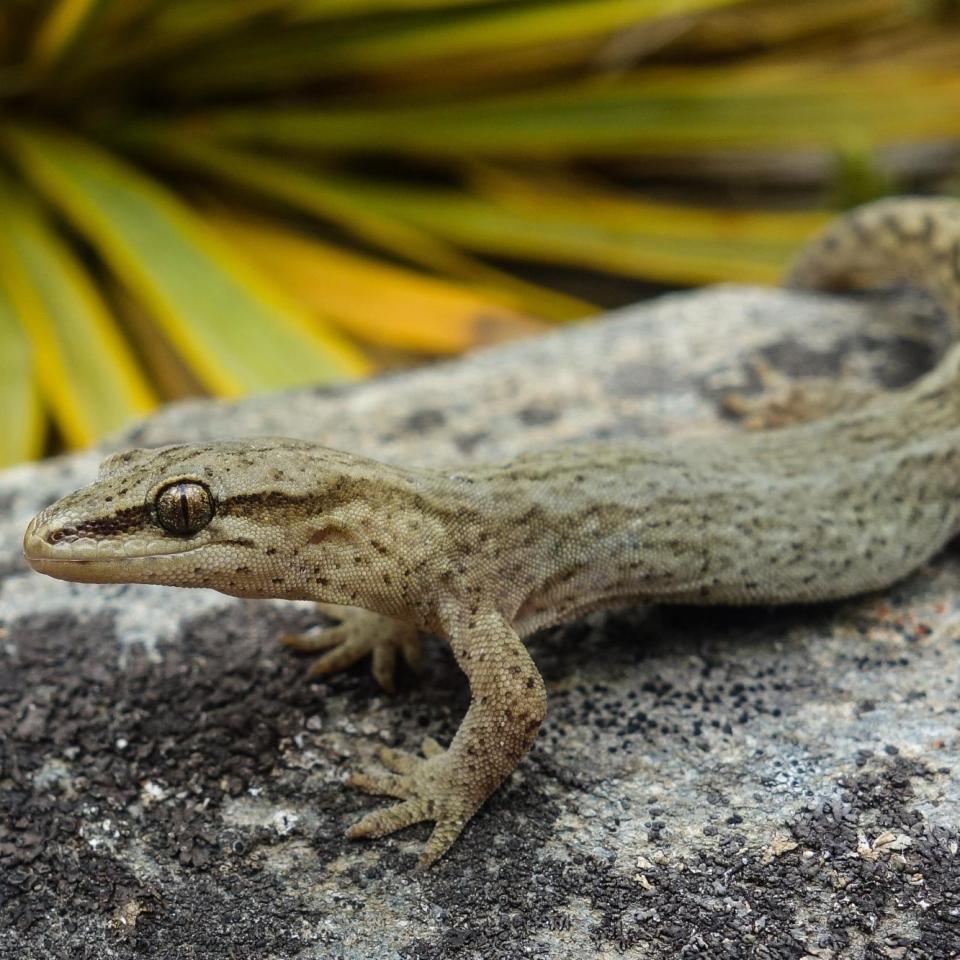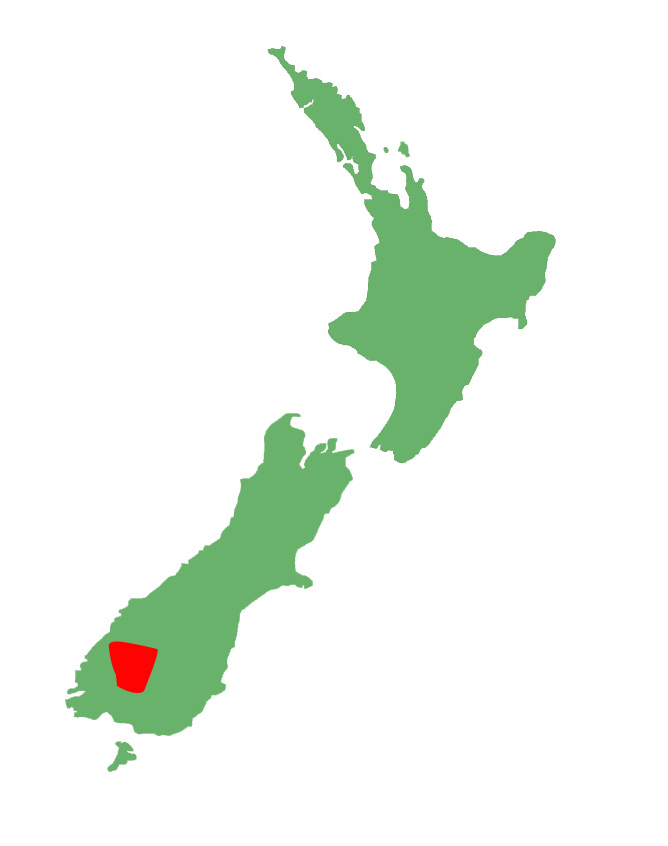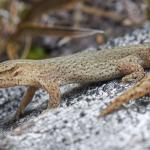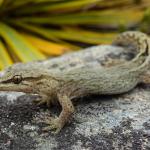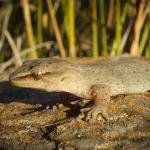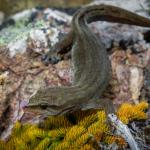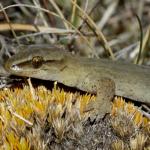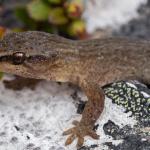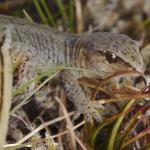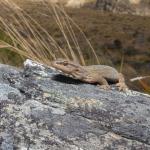- Home
- Herpetofauna Index
- Native
- Woodworthia "southern Mini"
Woodworthia "southern mini"
Short-toed gecko
Woodworthia "southern mini"
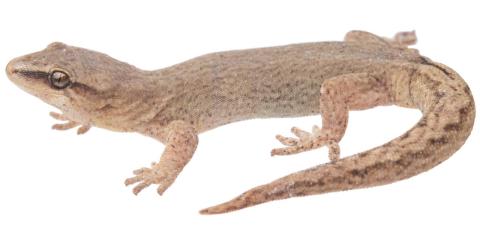
Length: SVL up to 65 mm, with the tail being shorter than the body length
Weight: unknown
Description
A very petite, high elevation relative of the North Island's goldstripe gecko (Woodworthia chrysosiretica), with a snout-vent-length up to SVL up to 65 mm. Dorsal surface typically uniform light olive, olive-grey, or olive-brown, sometimes with pale indistinct dorsolateral stripes and dark brown speckles. Lateral surfaces similar to dorsal surface with basal light olive, olive-grey, or olive brown colour, sometimes with small pale blotches. Ventral surface uniform pale olive-grey, sometimes with dark brown speckles. Short-toed geckos also possess a distinctive dark brown canthal stripe that runs straight from the nostril, behind the eye, and begins to fade above the ear. This is somewhat similar to the canthal stripe that occurs in their northern relative, the goldstripe gecko (Woodworthia chrysosiretica).
Life expectancy
Unknown.
Distribution
Short-toed geckos are known from a range of subalpine/alpine areas in Southland and Otago. They are known to occur from the Garvie Mountains, Livingstone Mountains, Humbolt Mountains, Thompson Mountains, Eyre Mountains, Hector Mountains, The Remarkables, Mt Rosa, Slate Range, and Mataura Range (van Winkel et al. 2018).
Ecology and habitat
Short-toed geckos are nocturnal/cathemeral, saxicolous, and inhabit subalpine habitat between approximately 700 m and 1700 m above sea level (Jewell 2008). This species occurs in scree, rocky herbfield, tallus, loose rocks, and creviced bluffs (rarely). They are very secretive and rarely emerge to bask in the open (pers. comm. Tony Jewell 2021)
Social structure
Unknown. However, it is not known to aggregate in large groups unlike other saxicolous Woodworthia. Instead, they are usually found individually or in pairs, and occasionally with other syntopic Woodworthia species (van Winkel et al. 2018).
Breeding biology
Birth is thought to occur in late summer (February to March), or sometimes in spring. One or two young are produced either annually or biennially (van Winkel et al. 2018).
Diet
Feeds on insects and possibly the fruits and nectar of native plants.
Disease
Unknown.
Conservation strategy
This species is not currently being managed, however, development to alpine resorts and ski fields may disturb habitat these animals live in. Consequently, lizard management/mitigation may have to be performed in such scenarios.
Interesting notes
Short-toed geckos get their common name from their relatively stumpy-looking toes, whilst their TAG name is a reference to their small size and southern distribution.
Short-toed geckos are members of the 'common gecko' complex, a group of closely related species which are regionally distributed throughout New Zealand. Historically, most of these were considered a single highly-variable species - Hoplodactylus maculatus (the so called 'common gecko'). The 'common gecko' has now been separated into over ten different species.
The Short-toed gecko along with its sister species the Goldstripe gecko sits at the base of the Woodworthia genus, sharing a common ancestor with both the Southern and Northern clades.
References
Jewell, T. (2008). A photographic guide to reptiles and amphibians of New Zealand. Auckland: New Holland.
van Winkel, D., Baling, M., Hitchmough, R. 2018. Reptiles and amphibians of New Zealand – a field guide. Auckland university press, Auckland New Zealand.

